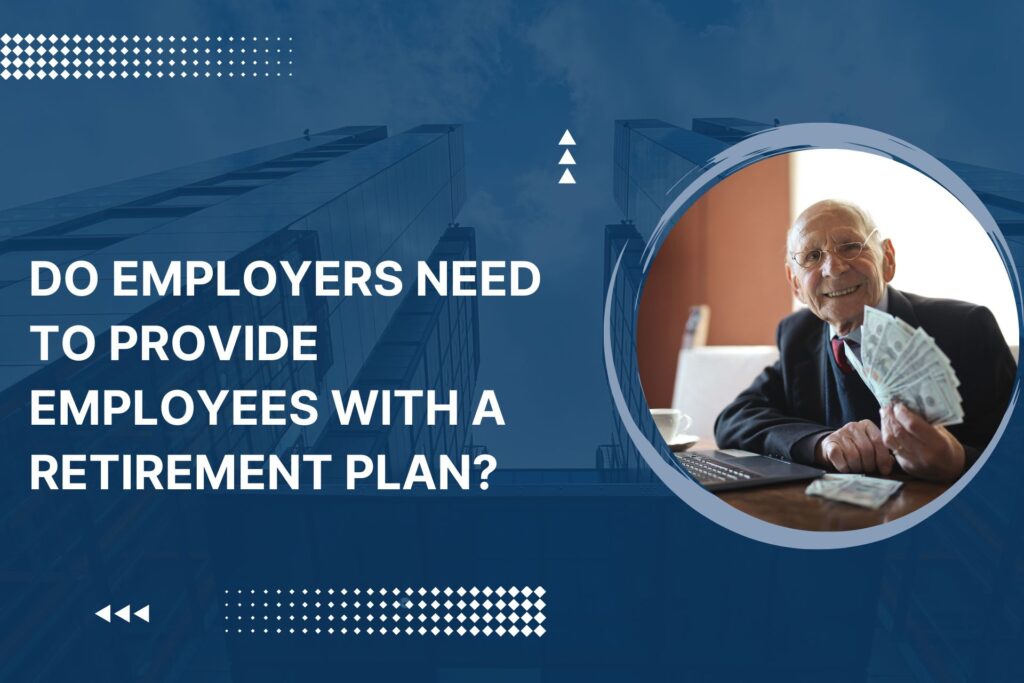In today’s ever-evolving economic landscape, the question of whether employers need to provide employees with retirement plans has become a topic of significant importance. As the workforce continues to diversify and the financial pressures of retirement loom larger, understanding the role of employers in securing their employees’ futures is crucial. This comprehensive article will delve into the necessity, benefits, and implications of employer-provided retirement plans, providing an in-depth analysis for both employers and employees.
Understanding Employer-Provided Retirement Plans
Employer-provided retirement plans are financial arrangements set up by companies to help employees save for their retirement. These plans are designed to offer tax advantages and often include contributions from both the employer and the employee. The most common types include 401(k) plans, pension plans, and profit-sharing plans.
401(k) Plans
A 401(k) plan is a defined contribution plan where employees can elect to have a portion of their salary deferred to a retirement account. Employers may also contribute to this plan, either by matching a percentage of the employee’s contributions or making profit-sharing contributions. These contributions grow tax-deferred until they are withdrawn during retirement.
Pension Plans
Pension plans, also known as defined benefit plans, promise a specified monthly benefit upon retirement, which is typically based on salary and years of service. These plans are funded primarily by the employer, making them a valuable benefit for long-term employees.
Profit-Sharing Plans
Profit-sharing plans allow employers to share a portion of their profits with employees. Contributions to these plans are discretionary, meaning employers can decide each year how much to contribute, if anything. This flexibility makes profit-sharing plans attractive to companies with fluctuating profits.
The Legal Landscape of Retirement Plans
While there is no federal mandate requiring employers to provide retirement plans, several regulations and incentives encourage their provision.
Employee Retirement Income Security Act (ERISA)
ERISA is a federal law that sets minimum standards for most voluntarily established retirement and health plans in private industry. It ensures that plan fiduciaries do not misuse plan assets and provides participants with the right to sue for benefits and breaches of fiduciary duty.
Tax Incentives
The government offers significant tax incentives to both employers and employees to encourage the establishment and participation in retirement plans. Employers can deduct contributions on their federal income tax returns, while employees benefit from tax-deferred growth on their retirement savings.
The Benefits of Providing Retirement Plans
Attracting and Retaining Talent
Offering a comprehensive retirement plan can be a powerful tool for attracting and retaining top talent. In a competitive job market, potential employees often look for benefits that provide long-term financial security.
Boosting Employee Morale and Productivity
Employees who feel secure about their financial future are generally more productive and engaged. Knowing that their employer is invested in their long-term well-being can boost morale and loyalty, leading to higher job satisfaction and lower turnover rates.
Tax Advantages for Employers
Employers benefit from tax deductions on their contributions to employee retirement plans. These deductions can significantly reduce the overall tax burden for the company, making retirement plans a financially sound decision.
Challenges and Considerations
While the benefits of offering retirement plans are clear, there are also challenges that employers must consider.
Cost of Implementation and Management
Setting up and maintaining a retirement plan can be costly. Employers need to consider administrative fees, compliance costs, and the potential financial commitment of matching contributions or funding pension plans.
Regulatory Compliance
Compliance with ERISA and other regulations requires careful management. Employers must ensure that they are meeting all legal requirements to avoid penalties and lawsuits.
Employee Education and Participation
Simply offering a retirement plan is not enough. Employers must also invest in educating their employees about the importance of participation and how to make the most of their benefits. This education can increase plan participation rates and help employees make informed decisions about their retirement savings.
Learn More About Retirement Plans Today!
Contact NowAlternatives to Traditional Retirement Plans
For employers who may find traditional retirement plans too burdensome, there are alternative options.
Simplified Employee Pension (SEP) Plans
SEP plans are simpler to set up and maintain than traditional retirement plans. They are a popular choice for small businesses and self-employed individuals because they offer the same tax advantages with less administrative hassle.
Savings Incentive Match Plan for Employees (SIMPLE) IRAs
SIMPLE IRAs are another option for small businesses. They are easy to establish and allow both employers and employees to contribute. Like 401(k) plans, contributions grow tax-deferred until retirement.
The Future of Employer-Provided Retirement Plans
As the workforce continues to evolve, so too will the landscape of employer-provided retirement plans. Technological advancements and changing economic conditions will shape the future of retirement planning.
Technology and Automation
The integration of technology in retirement planning can streamline administrative processes and improve the participant experience. Automated enrollment and robo-advisors can help employees make better investment decisions with less effort.
Adapting to a Gig Economy
With the rise of the gig economy, more workers are classified as independent contractors rather than traditional employees. This shift presents challenges for retirement planning, as these workers are typically not eligible for employer-provided plans. Employers will need to explore new ways to support the retirement savings of a more transient workforce.
Conclusion
In conclusion, while employers are not legally required to provide retirement plans, doing so offers numerous benefits for both the employer and the employee. From attracting top talent to boosting productivity and taking advantage of tax incentives, the advantages are significant. However, the costs and regulatory requirements must be carefully managed. As the economic landscape continues to change, employers must remain adaptable and proactive in their approach to retirement planning.


